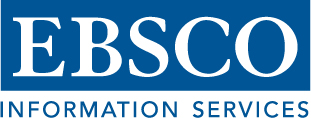Parsing Nicodemus’s Words: A Biblical Grammatical Approach to Adult Spiritual Rebirth John 3:4
Abstract
This research aims to uncover the profound significance and theological consequences of Nicodemus’ inquiry by employing Bible language analysis. This study employs a thorough biblical grammar methodology to examine Nicodemus’ utterance in John 3:4, explicitly focusing on the interrogative line “How can a person be born when he is old?” This study employs theological literature and biblical commentaries to analyze grammatical elements to elucidate Nicodemus’ inquiry’s context and theological importance. Linguistic research indicates that Nicodemus's focus was directed. Nicodemus' inquiry demonstrated genuine sincerity, although it appeared that there was a state of perplexity. The contextual perspective highlights that Nicodemus’ inquiry stemmed from his Pharisaic education, and his status caused him to overlook Him in his questioning initially. Researchers provide an alternative interpretation of Nicodemus' inquiry, suggesting that it may be sarcastic and convey a feeling of superiority. Other researchers argue that Nicodemus fervently articulated his request due to his weak understanding. The ability to accept and study different points of view with an open mind and without prejudice allows for the development of broader knowledge.
Keywords
Full Text:
PDFReferences
Baxter, James Sidlow. Baxter’s Explore the Book. Grand Rapids, Michigan, United States, 1987.
Bengel, John Albert. Gnomon of the New Testament. Eugene, Oregon, US: Wipf and Stock Publishers, 2004.
Coloe, Mary L. “Nicodemus—A Rabbi Seeking Wisdom.” Interpretation (United Kingdom) 77, no. 4 (2023): 316–24. https://doi.org/10.1177/00209643231183424.
Comorovski, Ileana. Interrogative Phrases and The Syntax-Sematics Interface. USA: Springer Science Business Media Dordrecht, 1996.
Cotterell, Peter. “Sociolinguistics and Biblical Interpretation.” Vox Evangelica 16 (1986): 61–76. https://biblicalstudies.org.uk/pdf/vox/vol16/sociolinguists_cotterell.pdf
Damarwanti. “Gaya “Permainan Kata dan Pernyataan yang Disalahpahami” Sebagai Cara yang Lebih Efektif dalam Berteologi Dibandingkan Dengan Gaya Tulisan Deklaratif dalam Tulisan Yohanes.” Sanctum Domine Jurnal Teologi 6, no. 2 (2018): 59-82. https://doi.org/10.46495/sdjt.v6i2.39
Ellicott, Charles John. Ellicott’s Bible Commentary. Grand Rapids, Michigan: Zondervan Publishing House, 1979.
Ferinia, Rolyana, Ardhariksa Zukhruf Kurniullah, Nova Yesyca Naipospos, Diena Dwidienawati Tjiptadi, Dyah Gandasari, Tia Metanfanuan, Meidy Lieke Karundeng, Bonaraja Purba. Komunikasi Bisnis. Medan: Yayasan Kita Menulis, 2020.
Ford, David F. “Meeting Nicodemus: A Case Study in Daring Theological Interpretation.” Scottish Journal of Theology 66, no. 1 (2013): 1–17. https://doi.org/10.1017/S0036930612000270.
Green, J. P. The Interlinear Hebrew-Greek-English Bible. Indiana: The Book Factory, 1981.
Grese, William C. “”Unless One Is Born Again”: The Use of a Heavenly Journey in John 3.” Journal of Biblical Literature 107, no. 4 (1988): 677-83. https://doi.org/10.2307/3267629.
Grover, Susan M. “Shaping Effective Communication Skills and Therapeutic Relationships at Work: The Foundation of Collaboration.” Workplace Health and Safety 53, no. 4 (2005): 177–82. https://doi.org/10.1177/216507990505300408.
Guffey, Mary Ellen, and Dana Loewy. Essentials of Business Communication. USA: Cengage Learning, 2016.
Guthrie, Donald. Tafsiran Alkitab Masa Kini 3 Matius – Wahyu, cet. 12. Jakarta: Yayasan Komunikasi Bina Kasih/OMF, 2012.
Hasyim, Muhammad, and Burhanuddin Arafah. “Semiotic Multimodality Communication in The Age of New Media.” Studies in Media and Communication 11, no. 1 (2023): 96–103. https://doi.org/10.11114/smc.v11i1.5865.
Herring, Peter. Complete English Grammar Rules. USA: Farlex International, 2016.
Hoyt, Herman A. “The Explanation of the New Birth.” Grace Journal 8, no. 2 (1967): 14–21. https://biblicalstudies.org.uk/pdf/grace-journal/08-2_14.pdf
Hutagalung, Stimson B. “”Nikodemus: Tepatkah Sebutan Baginya” Murid Rahasia,”? Jurnal Koinonia 11, no. 2 (Desember 2019): 61–70. https://jurnal.unai.edu/index.php/koinonia/article/view/2355/
Joyce, James. “An Encounter.” Dubliners 3 (2009): 1–12. https://doi.org/10.1093/owc/9780199536436.003.0003.
Koester, Craig R. “Theological Complexity and the Characterization of Nicodemus in John’s Gospel.” In Characters and Characterization in the Gospel of John, edited by Christopher W. Skinner, 165–181. London: Bloomsbury T&T Clark, 2013. https://doi.org/10.5040/9781472550330.ch-010.
Leech, Geofrey. Semantics. New York: Penguins Book, Ltd., 1981.
Lindawati, L. “Fungsi Tutur Kalimat Tanya Bahasa Indonesia.” Litera 11, no. 2 (2012): 256-66. https://doi.org/10.21831/ltr.v11i2.1067
Marsh, F. S. The Cambridge Bible for Schools and Colleges. Edited by A. F. Kirkpatrick. Cambridge: University Press, 1942.
Meyer, Heinrich August Wilhelm. Meyer’s Commentary. New York: Funk & Wagnalls, 1987.
Neighbor, R. E. “The New Birth and the Conversation with Nicodemus.” Review & Expositor 20, no. 1 (1923): 28–39. https://doi.org/10.1177/003463732302000102.
Pandean, Mariam L. M. “Kalimat Tanya Dalam Bahasa Indonesia.” Kajian Linguistik 5, no. 3 (2018): 75–88. https://doi.org/10.35796/kaling.5.3.2018.25030.
Phanuel, Osweto O. “Analysis of The Gospel of John in Light of Christology.” Tesis MTh, Charles University, Prague, 2008.
Sandstrom, Sidney R. “Nicodemus: Coward or Convert?” Religious Educator 9, no. 3 (2008): 49-61. https://rsc.byu.edu/vol-9-no-3-2008/nicodemus-coward-convert
Scalzo, Francis-David thelstan. The Jewish Basis for the Born Again Experience in John 3. Faculty of Divinity. Virginia: John W. Rawlings School, 2022.
Siburian, Nikson. “Menimbang Kembali Konsep Kelahiran Kembali: Kritik Sosio-Historis Yohanes 3:1-21.” DUNAMIS: Jurnal Teologi Dan Pendidikan Kristiani 7, no. 1 (2022): 114–23. https://doi.org/10.30648/dun.v7i1.657.
Suggit, J. N. “Nicodemus - The True Jew.” Neotestamentica 14 (1980): 90–110. https://www.jstor.org/stable/i40118190
“Summary and Analysis the Gospel of John.” CliffsNotes. 2018. https://www.cliffsnotes.com/literature/n/new-testament-of-the-bible/summary-and-analysis/the-gospel-of-john
Top, Brent L. “Spiritual Rebirth: Have Ye Been Born of God?” In the Book of Mormon and the Message of the Four Gospels. Edited by Ray L. Huntington and Terry B. Ball. Provo, UT: Religious Studies Center, Brigham Young University, 2001. https://rsc.byu.edu/book-mormon-message-four-gospels/spiritual-rebirth-have-ye-been-born-god.
Wells, George R. “Some Aspects of the Discourse with Nicodemus.” The Biblical World 51, no. 1 (1918): 3–8. https://doi.org/10.1086/475934.
Zeidan, Adam. “Nicodemus.” Britannica. Accessed February 3, 2024. https://www.britannica.com/biography/Nicodemus.
DOI: http://dx.doi.org/10.25278/jj.v22i1.906
viewed = 0 times



















